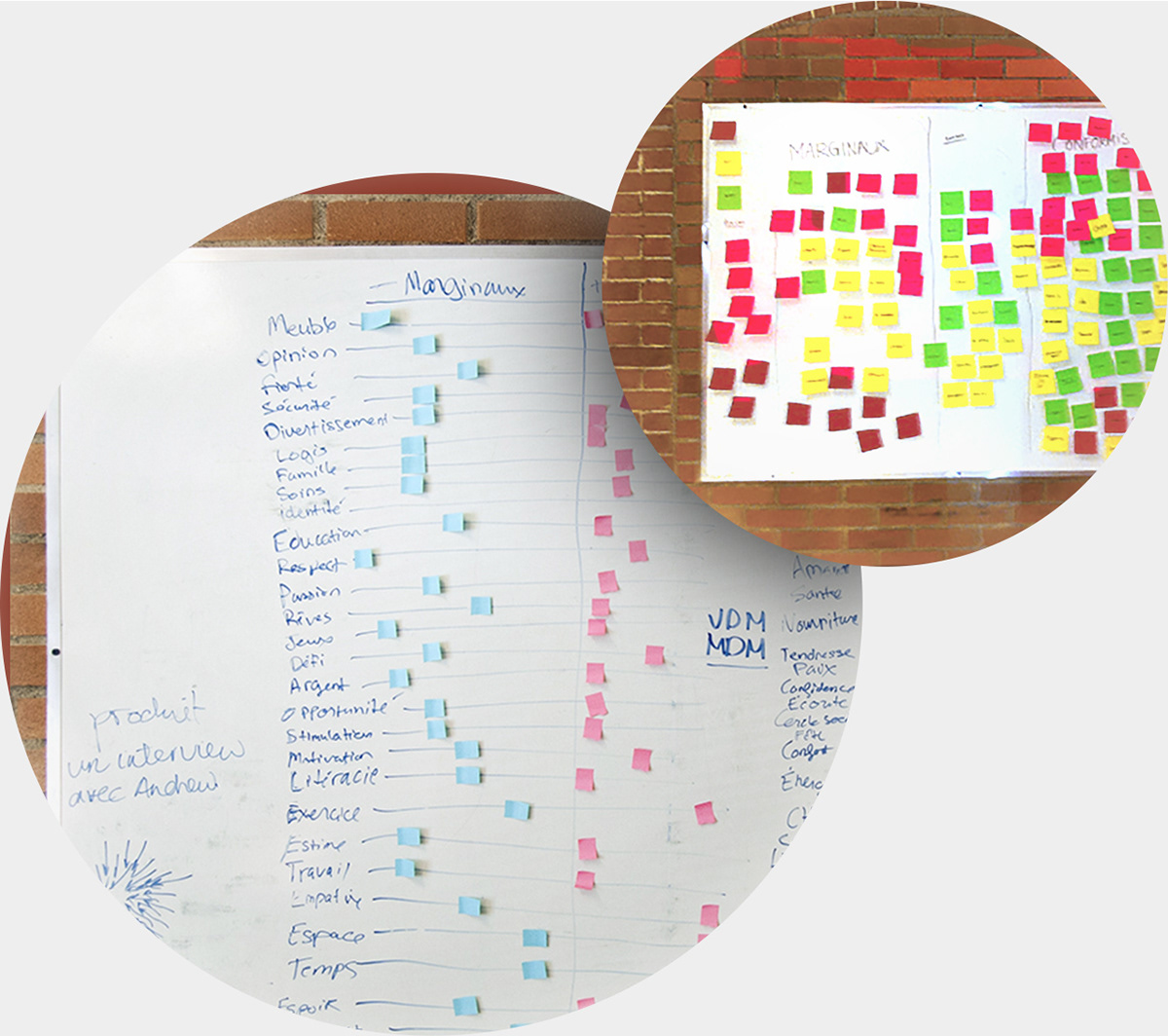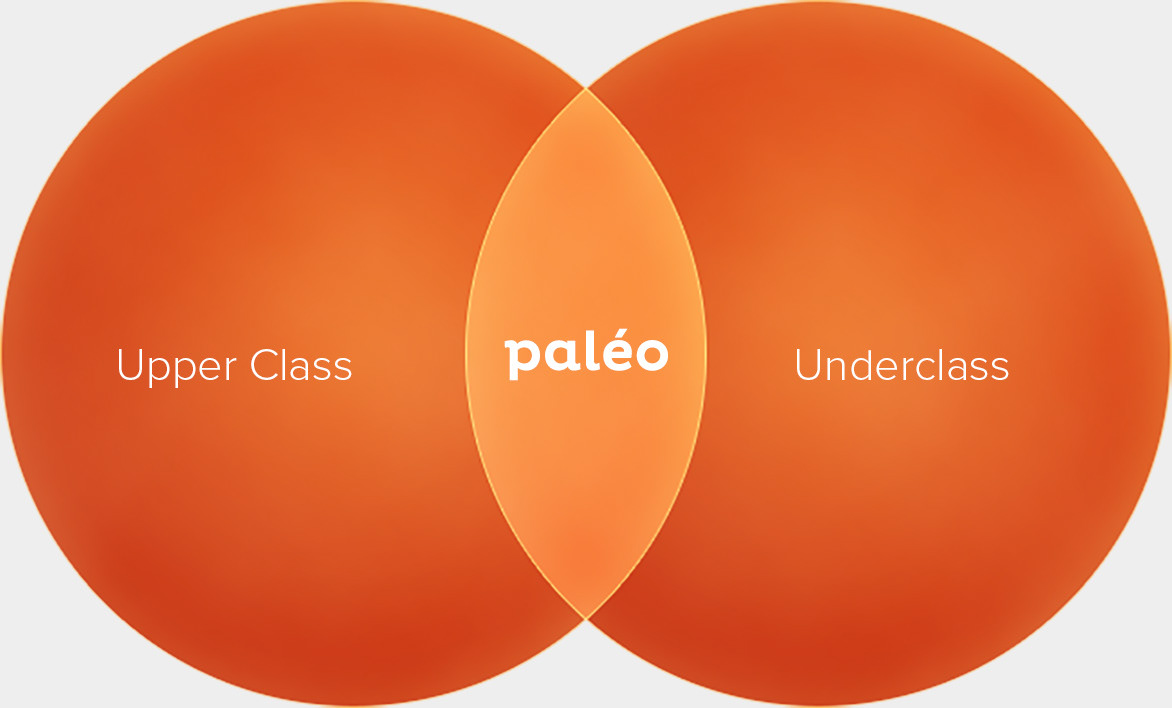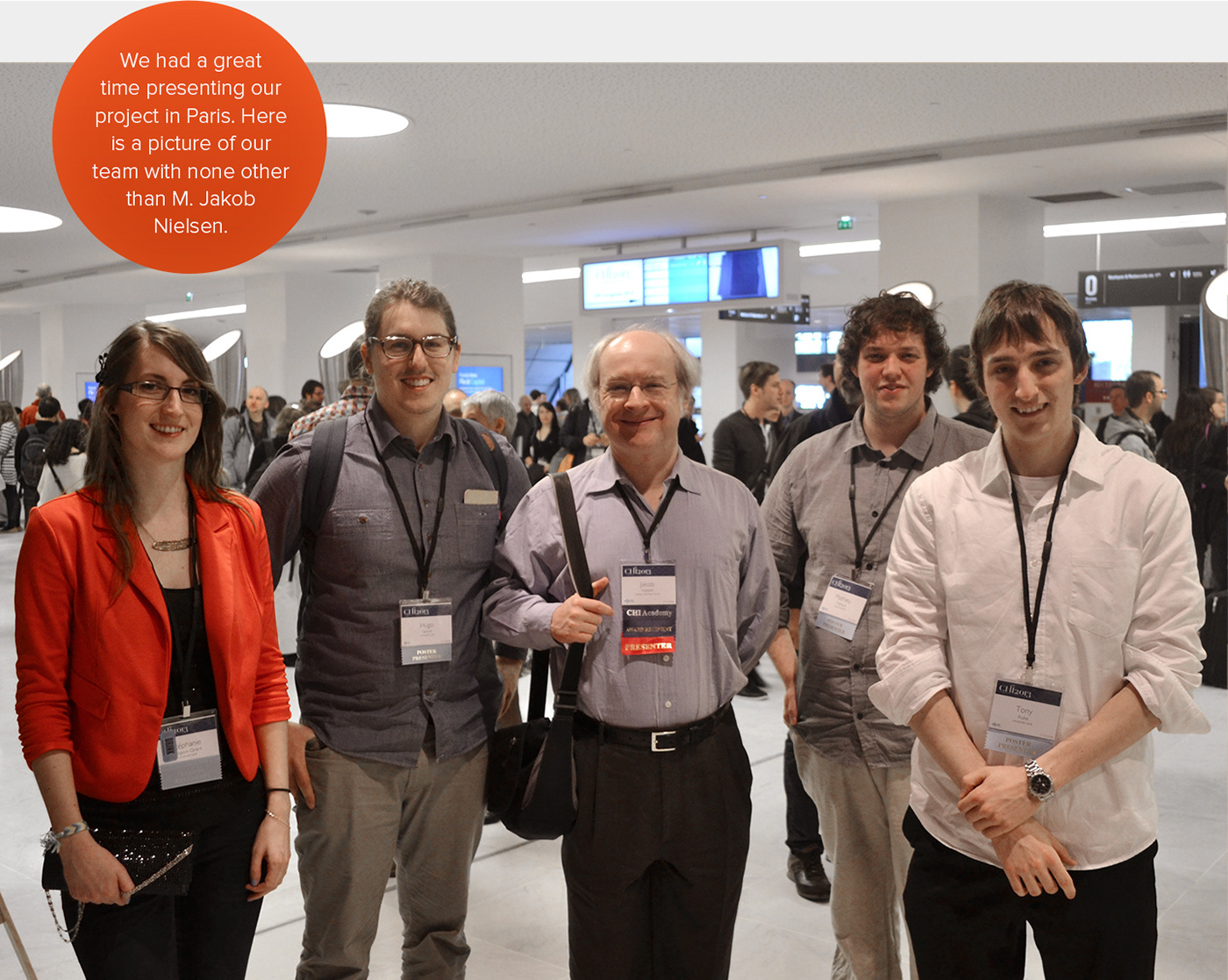

Once our problem was better understood,
we conducted a series of data visualization exercices.
we conducted a series of data visualization exercices.

At this point, we were looking for common grounds between our two target audiences.

One of our main leads was the Maslow's Pyramid of Need, which presents human needs from the most fundamental ones at the bottom to the higher ones at the top. Given our two very different target audience, we knew we had to aim at the bottom of the pyramid to find common ground between them.



After developing an initial prototype, we've set out to test it with our actual target audience. To do so, we did a combination of the Think Aloud Protocol and the Wizard of Oz method. We did so by installing a large screen in a public area and by having people try to interact with it. During the tests, we simulated interactivity by alternating between pre-rendered animation.

Next, we conducted a second test. This time, it was with our less privileged target audience. To do so, we went to a soup kitchen where we set up a small computer and repeated the test. This allowed us to get a clear overview of how people interacted with our product.


In the end, we managed to create a device that meets our initial goal. We created an experience that is simple, playful, and accessible to everyone in the district. Of course, there is more to this project than this short presentation. If you wish to learn more about it, I invite you to read the extended abstract.
While the project was not fully realized, a few other similar projects recently came out and made us believe Paléo could be a great success.







